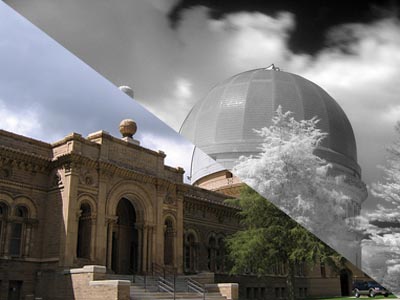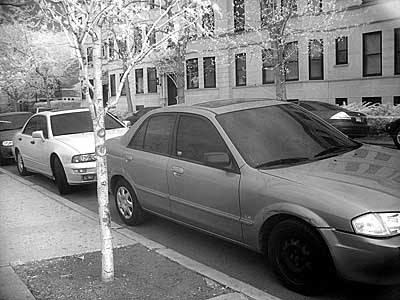
This is a split screen image of Yerkes Observatory in the visual and near-infrared. I moved the camera in between images and wasn't planning in advance, but the comparison still works. You can see the pine tree turns white, the blue sky turns very dark, and the tones of the brickwork and dome sheeting subtly change.
Car Windows
Automobile windows, we are all taught, are wonderful examples of the greenhouse effect. Visible light streams in, is absorbed by the car's interior, and converted to heat. The thermal infrared light is then reradiated by the interior but unable to escape the glass, and the car heats up.
Manufacturers are well aware of this fact, and today's cars have a higher glass to surface ratio than older ones. Given this, why aren't we melting the plastics in the car?
We could tint the windows, to reduce the total light into the car, but this is dangerous at night, and is completely impractical for the windshield.
The answer is in the glass itself. Automotive glass contains a special additive to absorb near-infrared light. NIR is worthless to human vision, but can contribute significantly to the heat load of a car. (I can't remember the reference, but I've read it can be 50%).
Here is an image of a car that visually had no tinted windows; indeed, no one can opaque their windshield legally:

A spectral graph of a glass like that is here. (Link used to go to a nice graph but it's missing).
Currency
You can see that American currency has some sort of blank stripe code on the back of the new bills: http://www.lib.uchicago.edu/~dean/infrared/slides/IMG_4784.html.
I saw this at here; and then a simple search shows that it is no secret but a great anti-counterfeiting technique: http://www.accubanker.com/support/irmappings.phtml
Plants
These need a separate post.
P.S. Here's an image of a Linne statue with a false-color mapping.
My infrared gallery
IR hosta
Bushes in the near-IR
No comments:
Post a Comment